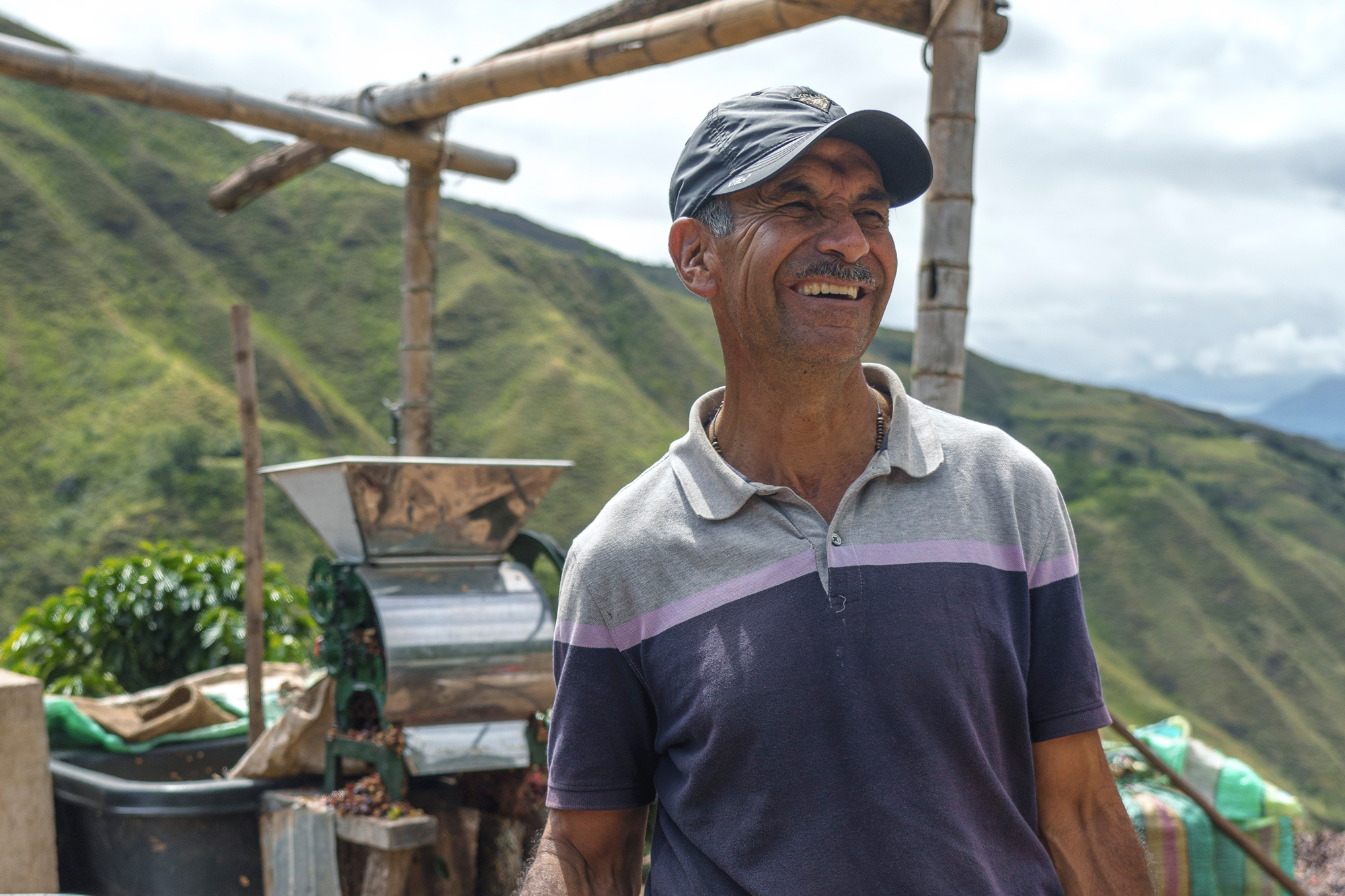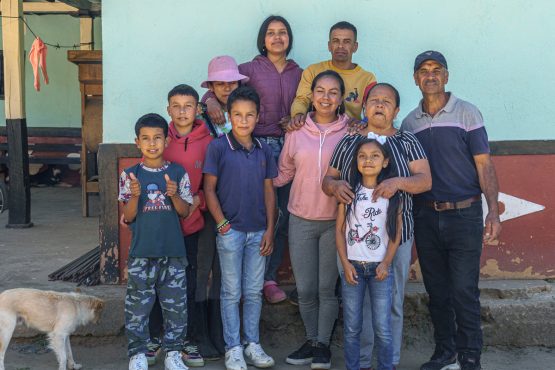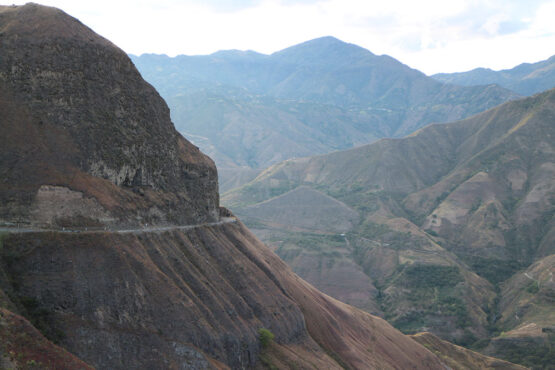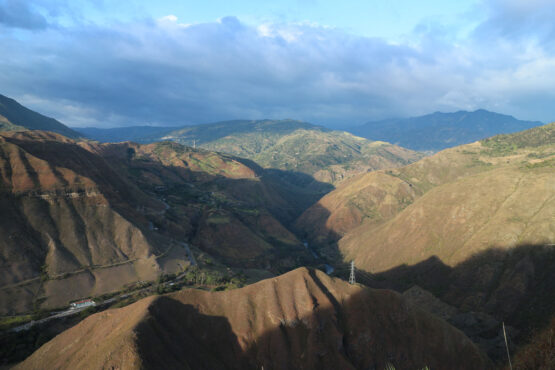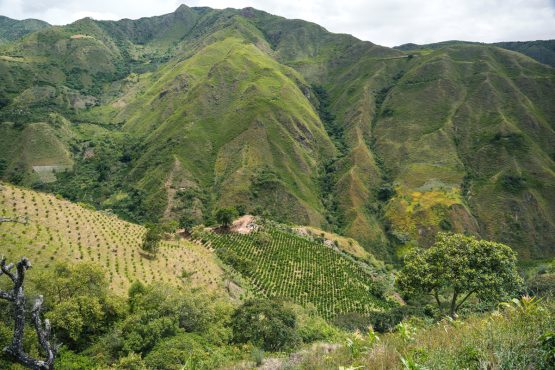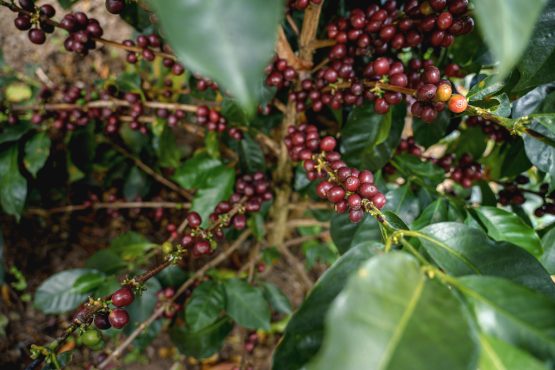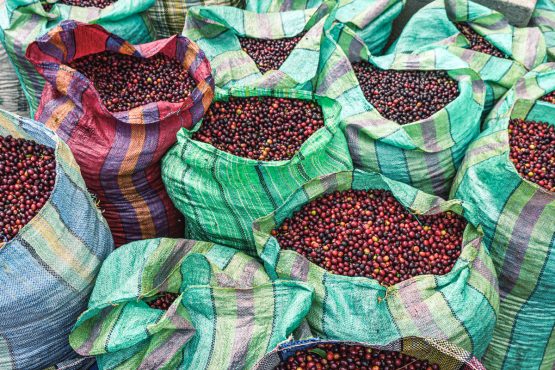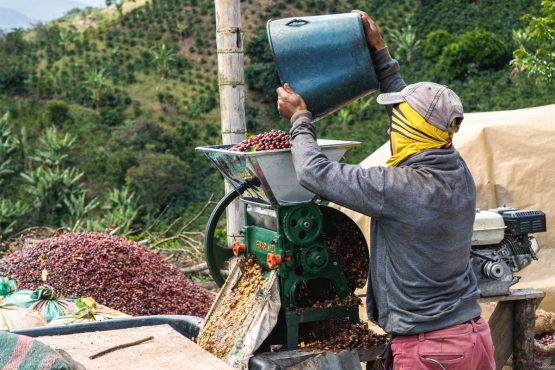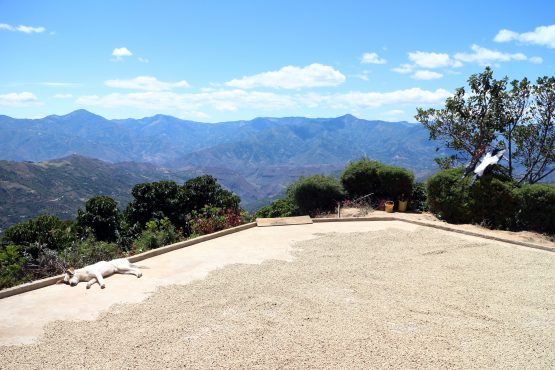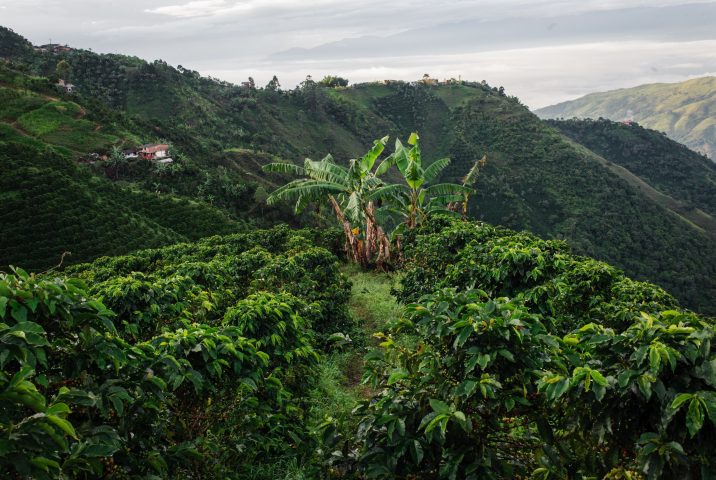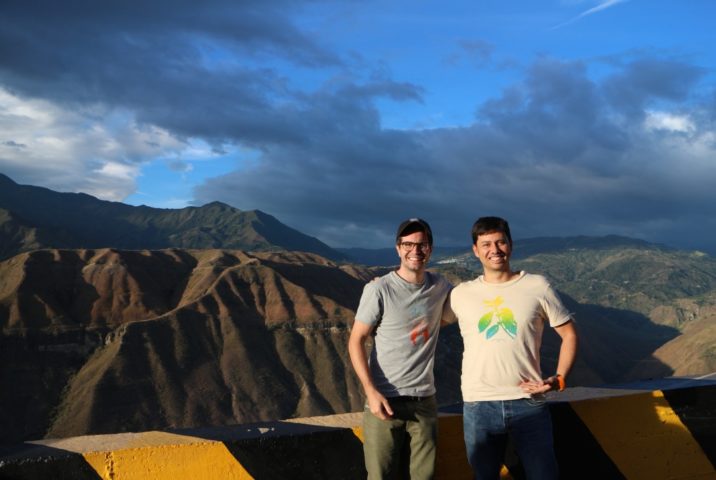Los Guayacanes
Well balanced and clean, with a juicy body and good structure. Dried apricot, black tea and vanilla.
This coffee was produced by Marco Fidel López, on his small farm Los Guayacanes (named after the local Guayacán trees found in the region). Located in the town of Las Cochitas, in the municipality of Buesaco, Nariño, this 2.5 hectare plot reaches as high as coffee can be planted in the steep hills surrounding the town — around 1,990 metres above sea level. The region is strikingly mountainous and boasts no fewer than five volcanoes: Chiles, Cumbal, Azufral, Doña Juana, and Galeras.
Don Fidel, as he is known around town, lives at Los Guayacanes with his wife and two youngest daughters. His eldest two children have already moved out of home, but Don Fidel gifted them with a parcel of land from the farm each to ensure they continue with coffee production. Together, they work the fields and process their coffee at Los Guayacanes’ onsite microbeneficio (small wet mill).
Don Fidel and his family share a life story with many other coffee producers working in the region. While Buesaco was under the control of the left-leaning FARC guerrillas, some thirty years ago, the only crop that could be cultivated and commercialised was poppy. Don Fidel was forced to grow poppies for many years and sell them to local rebel forces and drug cartels at very low prices. It wasn’t until the government liberated the area in the mid-2010s that Don Fidel and his neighbouring producers were able to explore other options for their land. Like many, he and his family uprooted the poppy plantations and replaced them with coffee trees — a crop that offers a much more sustainable and profitable future.
Today, Don Fidel grows coffee, anise and corn at Los Guayacanes. An eternal optimist, Don Fidel is passionate about specialty coffee production and is always looking for ways to improve his production. In recent years, he has adopted new “pre-fermentation” techniques, leaving his coffee cherry to sit in bags for up to two days in Buesaco’s cool climate, before depulping and processing. This extra step has helped enhance the fruit-driven flavours in his coffee, which beautifully complement the bright and citric profile the region is known for.
ABOUT BUESACO
For a long period in the 1990s and early 2000s, Buesaco was hit incredibly hard by violence and civil unrest, with much of the region under the control of the FARC guerrillas. The high elevations and rugged terrain of rural Nariño was ideal for growing opium poppy plants and coca, making it the perfect centre of operations for illegal groups and preventing a heavy government presence. It wasn’t until the 2010s that guerrillas were forced out of Buesaco, catalysing the transformation of the town into one of Colombia’s best-regarded coffee-growing regions.
Since then, many coffees grown here have performed exceptionally well in Colombia’s Cup of Excellence competition. The consistency of these results demonstrated to many growers that coffee from this region has the potential to be sold specialty lots to the international market, warranting greater premiums than they were receiving through other certification schemes.
Today, specialty coffee plays an important role in Buesaco’s prosperity and in the community’s pursuit of a peaceful future. Most of the region’s specialty-focused farmers began focusing on quality after 2013, when a small group of 17 growers got together and formed the first regional association, called Grupo Empresarial Buesaco. With the assistance of the local technical school, group members organised themselves into a small operation with the aim of buying, warehousing and commercialising exceptional coffee lots. The association grew very quickly and within four years had to form an offshoot group, Alianza Café, to focus primarily on specialty-grade coffee. Its members are committed to running the association with transparent practices, to achieve the final goal of improving incomes for the nearly 400 growers that participate in their programs. Through Alianza Café, our Colombian export partner Pergamino met a number of farmers who are now part of their Allied Producer Program, and with whom they continue to work directly.
Buesaco is the traditional land of the Quillasingas, a people with a long and proud history of agriculture. While few of their population survived the brutal Spanish invasion of Nariño, their cultural heritage still lives on in the sustainable agricultural practices the region’s farmers employ. These learnings are first passed on at home, where each family carefully tends to a chagra, or patch of land dedicated to cultivation. Here, family elders share their knowledge on the making and implementation of organic fertilisers, seed propagation and herbal medicine—which have all contributed to the region’s reforestation efforts.
ABOUT NARIÑO
Nariño is located in Southwest Colombia, bordering Ecuador. Most of the forty thousand coffee producers in Nariño are incredibly small (averaging less than 2 hectares each) and are often located in very remote areas. Coffee in Nariño is grown at elevations that reach 2,200 metres above sea level, making it some of highest grown coffee in the world. Typically, it is very difficult to produce coffee at such high altitudes (as many plants suffer from ‘die back’) – however, Nariño’s proximity to the equatorial line and steep hills around the volcanoes provide a great angle for sun exposure, creating the right micro-climate for coffee plants to thrive. The high altitude of cultivation, combined with warm tropical days and cools nights, allows for slow maturation and development of the coffee cherries, giving time for concentrated sugars to develop in the fruit and resulting in a very unique, sweet, and complex cup profile.
Nariño typically has a wet season with periods of continuous rain, followed by a dry season. Because of this, there is only one flowering period a year and, therefore, a single harvest, usually in April – July (this is different to other parts of Colombia where two harvests are the norm). In order to survive, producers in Nariño must have other economic activities, which typically include harvesting and selling plantains, fique (a fiber used to make rope) and/or cuy (guinea pigs).
Our export partners for this coffee, Pergamino, have worked hard commercialise specialty-grade coffee throughout Nariño, and have uncovered some stunning coffees and very dedicated producers in the process. They work closely with the producers to give them feedback on their coffees (provided by Pergamino’s expert team of cuppers) and provide top up payments when the coffee is sold at a higher premium.
Head here to learn more about the work of Pergamino.
HOW THIS COFFEE WAS PROCESSED
The coffee in this lot was selectively hand-harvested, with most labour being provided by Don Fidel and his family. During the peak of the harvest, the family hires local labourers to help harvest the coffee cherry, who are paid on per kilogram or on a daily rate when there isn’t much coffee to harvest. It was then processed using the washed method at the farm’s ‘micro-beneficio’ (mill).
This freshly picked coffee cherry first spent up to two days “pre-fermenting” in sacks, away from the sun, in Buesaco’s cool climate. Cherries were then depulped using a small manual or electric pulper, and then placed into a fermentation tank, where it was fermented for 48 more hours and then washed using cold, fresh water from surrounding streams.
It was then carefully dried (over 10–18 days) on patios under the sun. Nariño experiences with some of the best drying conditions in the country due to the micro-climate and high elevation of the region, providing lower relative humidity, more wind and more sunny days than other areas of the country.
Once dry, the coffee was delivered to Pergamino’s warehouse, where it was cupped and graded, and then rested in parchment until it was ready for export.
